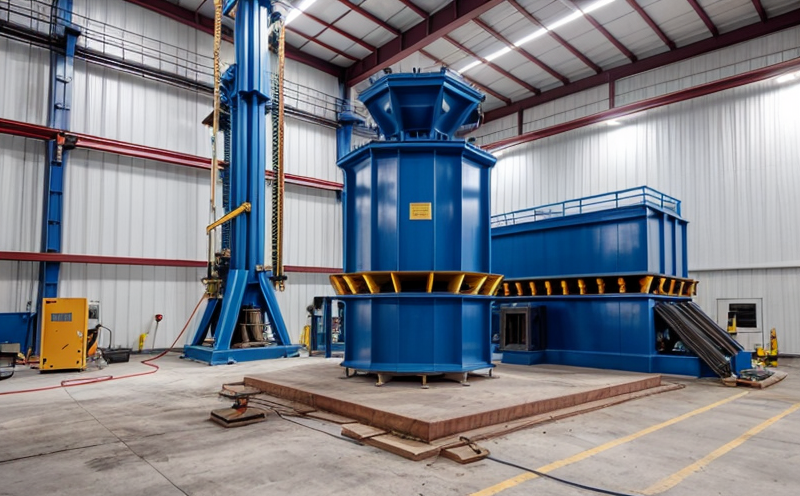ISO 7626-6 Structural Transmissibility Testing
The ISO 7626 series of standards provides a comprehensive framework for testing structural vibration and modal analysis. The specific standard, ISO 7626-6:2018, focuses on the determination of structural transmissibility using random excitation methods.
Structural transmissibility is critical in understanding how vibrations are transmitted through structures. This knowledge is essential for various applications including aerospace, automotive, and construction industries where minimizing noise and vibration is paramount to product performance and safety. The standard defines the procedures to ensure that test results accurately reflect real-world conditions.
The testing process involves subjecting a structure to controlled random excitations at specified frequencies within its resonance range. By measuring the displacement, velocity, or acceleration response of the structure, engineers can determine the transmissibility characteristics, which indicate how effectively vibrations are transferred from one point to another in the structure.
Proper specimen preparation is crucial for accurate testing results. Specimens should be representative of the actual structural components they will replace. For instance, in aerospace applications, test specimens might replicate engine mounts or landing gear structures. The material properties and dimensions must closely match those of the intended application to ensure valid comparisons.
Instrumentation plays a key role in this testing process. High-precision accelerometers and displacement transducers are used to capture vibration data accurately. Signal processing techniques such as Fast Fourier Transform (FFT) are employed to analyze the frequency content of the vibrations. Specialized software is required to interpret these signals and calculate the transmissibility ratio, which quantifies how much energy passes through a given point in the structure.
The testing setup typically includes a shaker or exciter that applies random forces across the specified frequency range. The specimen is mounted on isolation pads to simulate real-world conditions where structures are often supported by flexible mounts. Environmental factors like temperature and humidity can also influence test results, so controlled chambers may be used if necessary.
The primary output of this testing is a transmissibility curve that shows the relationship between input frequency and the resulting vibration levels at various points within the structure. This data helps engineers design structures with optimal damping properties or to identify potential sources of noise and vibration.
Compliance with ISO 7626-6 ensures that tests are conducted consistently across different laboratories, thereby enhancing reliability and comparability of results. It also provides a benchmark for assessing the quality of structural components in terms of their ability to manage vibrations effectively.
Scope and Methodology
- Applicability: ISO 7626-6 is applicable to structures that are subjected to random excitations in the frequency range where they operate. This includes components like vehicle suspensions, machinery bases, and building foundations.
- Test Setup: The test setup involves fixing a specimen to a shaker or exciter using appropriate isolation pads. A sensor network measures displacements, velocities, and accelerations at multiple points on the structure.
The methodology described in ISO 7626-6 involves several key steps:
- Selection of the appropriate frequency range based on the structural characteristics.
- Application of random excitation signals across this frequency range.
- Data acquisition and processing to calculate transmissibility ratios at various points.
- Analysis and interpretation of the resulting curves to assess structural performance.
Quality and Reliability Assurance
The quality assurance process in ISO 7626-6 testing includes rigorous calibration of all instruments used. Calibration ensures that measurements are accurate and consistent across different tests and laboratories.
- Instrument Calibration: Accelerometers, displacement transducers, and other sensors must be calibrated regularly using traceable standards.
- Data Consistency: Repeated tests on the same specimen should yield consistent results. Variability in measurements can indicate issues with calibration or test setup.
To ensure reliability, laboratories adhere to strict protocols for handling specimens and conducting tests. This includes maintaining controlled environmental conditions and using standardized procedures for data interpretation.
Competitive Advantage and Market Impact
- Enhanced Product Quality: Compliance with ISO 7626-6 ensures that products meet international standards, providing a competitive edge in the global market.
- Reduced Development Time: By ensuring early identification of potential issues through thorough testing, companies can optimize designs and reduce time-to-market.
The ability to accurately predict how structural components will perform under real-world conditions is crucial for maintaining a competitive edge. ISO 7626-6 testing helps manufacturers achieve this by providing reliable data that informs design decisions.





